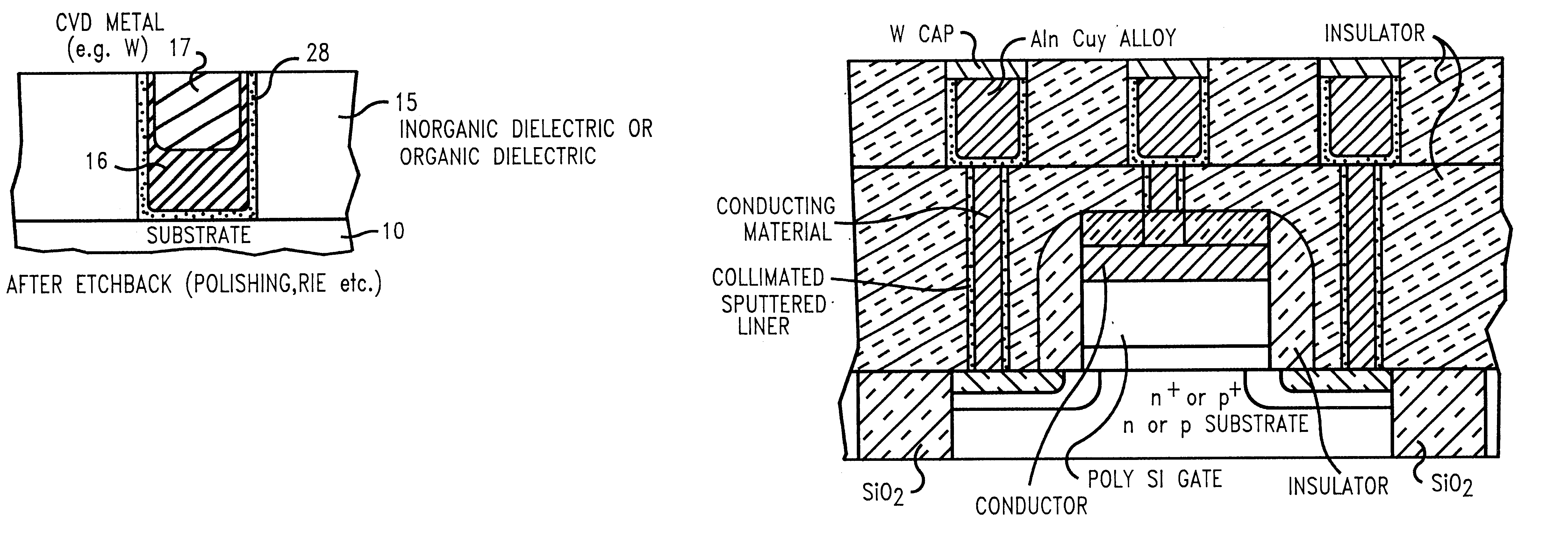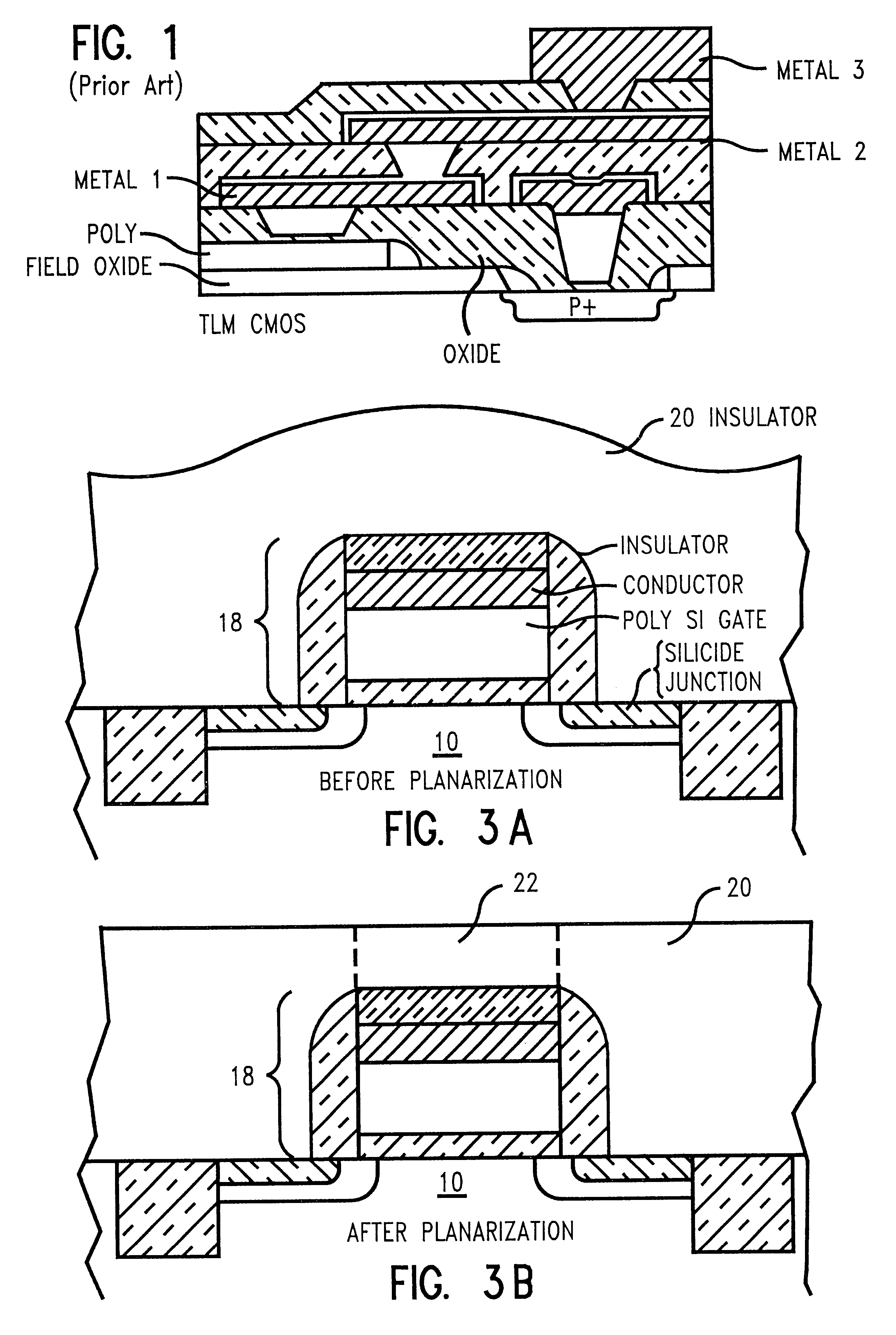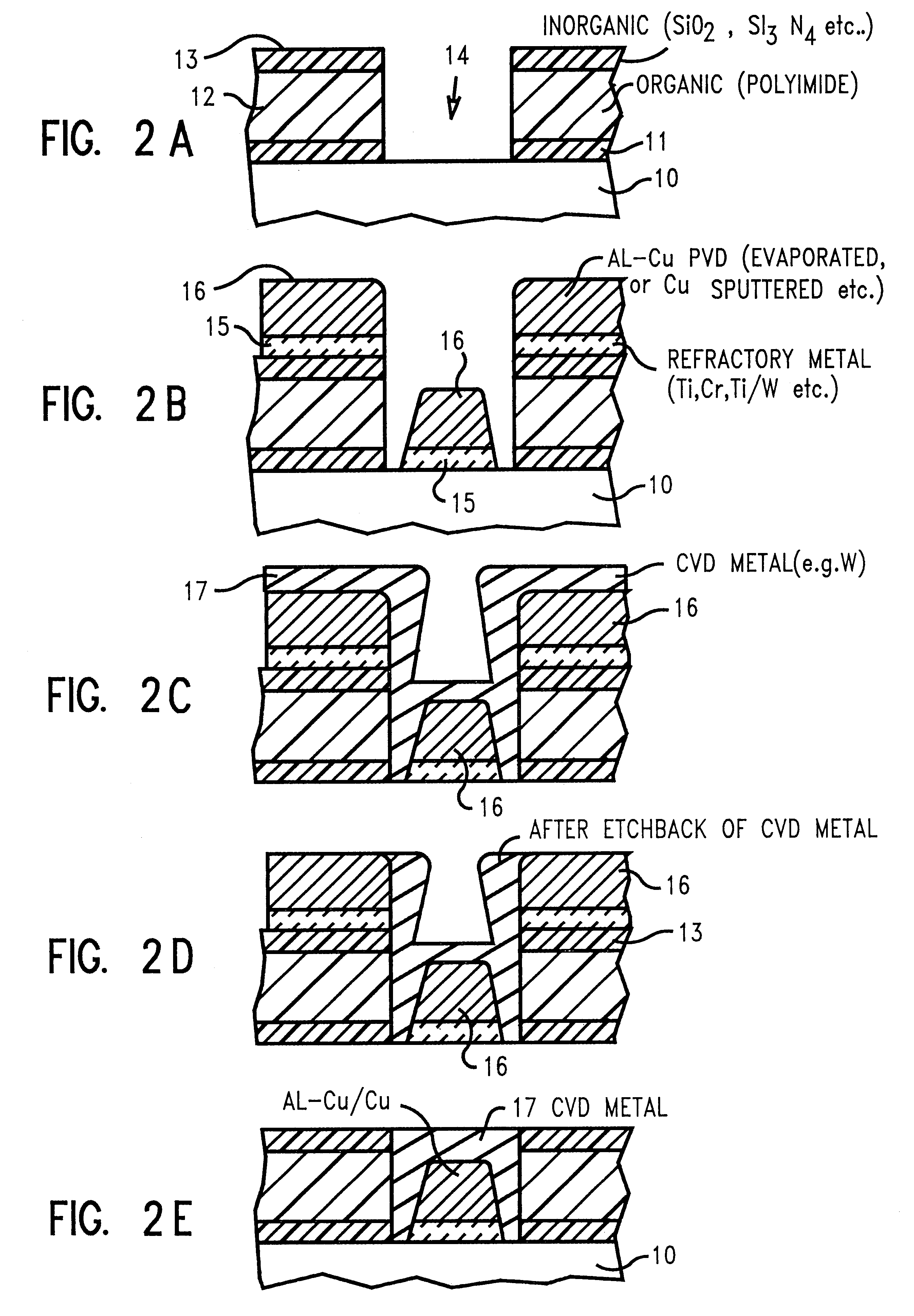Refractory metal capped low resistivity metal conductor lines and vias formed using PVD and CVD
a technology of refractory metal and capped metal, which is applied in the direction of electrical apparatus, semiconductor devices, semiconductor/solid-state device details, etc., can solve the problems of failure to meet the requirements of the application
- Summary
- Abstract
- Description
- Claims
- Application Information
AI Technical Summary
Benefits of technology
Problems solved by technology
Method used
Image
Examples
Embodiment Construction
The invention is generally related to methods for forming metal filled vias and conductor lines on a substrate where the vias and conductor lines include a soft, low resistivity metal which is capped with a relatively hard, refractory metal which is resistant to corrosion, wear, and electromigration, and where the vias and conductor lines are planar with a dielectric layer coated on the substrate. Several different and novel structures are created according to the procedures described in conjunction with FIGS. 2A-E, FIGS. 4A-E, and FIGS. 7A-B, depending on the PVD deposition technique utilized. It should be understood that the techniques and resulting structures are not limited to using any specific substrates and dielectric overlays (e.g., composites of inorganic and organic layers like that shown in FIGS. 2A-E and 5A-E can be used as well as single layers of inorganic or organic insulator materials). Moreover, the invention is not restricted to any particular metal combinations; r...
PUM
| Property | Measurement | Unit |
|---|---|---|
| depth | aaaaa | aaaaa |
| pressures | aaaaa | aaaaa |
| pressures | aaaaa | aaaaa |
Abstract
Description
Claims
Application Information
 Login to View More
Login to View More - R&D
- Intellectual Property
- Life Sciences
- Materials
- Tech Scout
- Unparalleled Data Quality
- Higher Quality Content
- 60% Fewer Hallucinations
Browse by: Latest US Patents, China's latest patents, Technical Efficacy Thesaurus, Application Domain, Technology Topic, Popular Technical Reports.
© 2025 PatSnap. All rights reserved.Legal|Privacy policy|Modern Slavery Act Transparency Statement|Sitemap|About US| Contact US: help@patsnap.com



